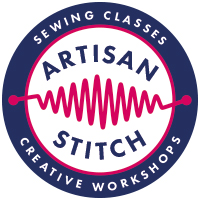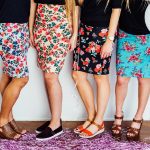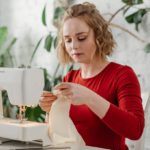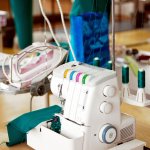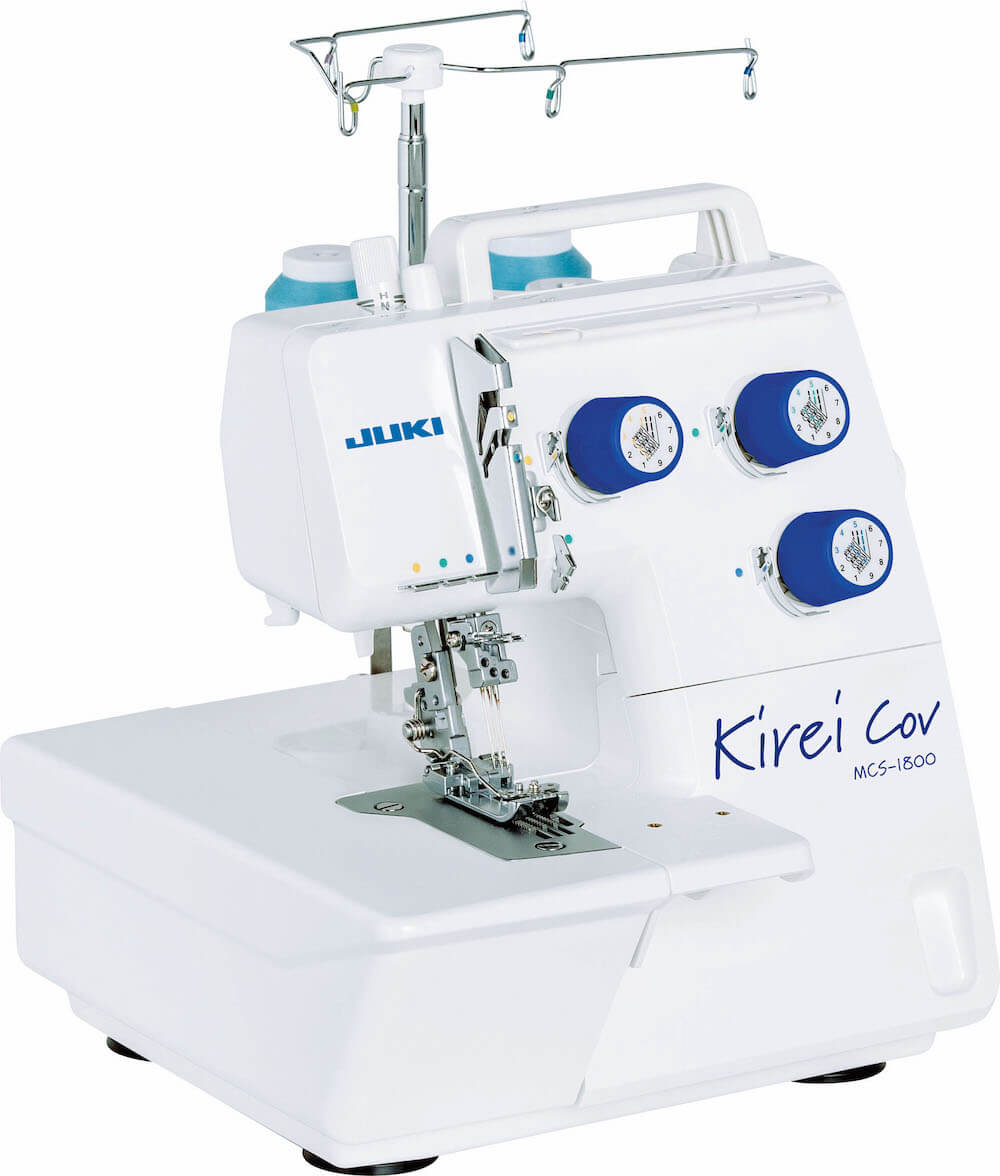
Juki MCS1800 coverstitch – review
3 needle, 2/3/4-thread Juki MCS1800 coverstitch sewing machine
What is cover stitch?
Cover stitch is the effect you see on t-shirt hems and neck bands on manufactured garments. There’s a twin-needle effect on the front, and something that looks a bit like an overlocker stitch on the back. You may also have noticed the looped effect on both right and wrong sides of a seam; that’s a top cover which is an even more highly-specialised machine and is commonly used in manufacturing of underwear, swimwear and yoga clothing. Cover stitch is highly-elastic and used mainly for sewing jersey knit garments, although it can be used on wovens too. I’ve been hankering after a cover stitch machine for a while so I decided lockdown was the perfect time for a treat.
What is a cover lock machine?
Initially, I tried a coverlock (a machine that converts between an overlocker and a cover stitch). For those with limited space or budget, one dual-purpose machine may be the perfect solution. And I hear very good things about some brands, notably Babylock. But they can take quite a while to swap over from one function to another and to re-thread. I also found mine a bit noisy and clunky, and it didn’t give great stitch quality. When you ask a single machine to perform two functions both requiring extremely complicated engineering, it’s always possible that there’s going to be a compromise.
It’s not you, it’s me.
It was probably user-error on my part, but I’m afraid we didn’t hit it off, and even after a few months, our relationship was still less than amiable. As I didn’t need the overlocker function anyway (I already own four overlockers), I decided that I’d rather have a dedicated cover stitch machine.
Since getting my Juki overlocker almost a year ago, there was only one cover stitch brand in the running. As mentioned in my earlier blog review of the MO644D Overlocker, Juki are specialists in the overlocker and cover stitch market. In fact they’re widely acknowledged to be the best sewing machine manufacturer in the world at the moment.
The Juki MCS1800 coverstitch is the latest offering from Juki. In the USA and Canada, it’s sold as the MCS1700. It’s an upgrade from the MCS1500 and has updated styling, an LED light, and the hemming attachment included. (This is an optional extra on the 1500).
Juki MCS1800 coverstitch – Technical specification
Stitch capability: 4 or 3 thread cover stitch seams and hems. The 3-thread function can be wide or narrow, and a 2-thread chain stitch.
Needles: takes standard system 130/705H for domestic sewing machines
Stitch length: range from 1-4mm
Stitch width: range from 2.5mm-5mm
Differential Feed: Ratio from 0.7 to 2.0 to prevent waving or puckering in jersey knit fabric
Presser foot: 8mm/10mm lift
Adjustable pressure on foot: yes – easily copes with thick and thin fabrics
Speed: up to 1350 stitches per minute
Dimensions: 280 (w) x 335 (d) x 285 (h)
Weight: 6.8kg
Retail price: £785
(The MCS1500 is £699 without the hemming attachment)
Juki MCS1800 coverstitch – the functions
4-thread cover stitch –use all 3 needles and the looper for a 5mm wide stitch
3-thread wide cover stitch – uses 2-needles and the looper for a 5mm wide stitch– remove the centre needle
3 thread narrow cover stitch – remove the right needle, use only the left and centre needles for a 2.5mm cover stitch.
2 thread chain stitch – remove the right and centre needles. Use only the left needle and the looper.
Note: the left needle is always used. Only the right and/or centre needles are removed.
Features of the Juki MCS1800 coverstitch
- When it comes to threading the looper of a cover stitch machine, I can’t lie. It is complicated, possibly even more so than threading the lower looper on an overlocker. But the clear colour-coding makes this job much easier – at all 13 points! But you can tie on the new thread and pull it through, as you’d do with an overlocker. I have forced myself to re-thread from scratch thought. Just so I know I can.
- Threading the needles is no different to threading overlocker needles, or indeed, sewing machine needles. As I mentioned in my review of the Juki overlocker, the clear colour-coded guides means that it’s actually quite difficult to get this bit wrong.
- Easy tension adjustment – rotation-type thread tension dials with the normal range of tensions highlighted for simple, consistent tension adjustment.
- Bright LED light – just like on their overlockers, the Juki coverstitch lighting is bright and clear. It lights the needle and operating area extremely well, without dazzling. The LED bulb doesn’t get hot.
- Easy to adjust stitch length – The stitch length adjustment knob is conveniently located on the right side of the machine.
- Differential Feed – as with overlockers, cover stitch machines have a dual feed system. The front and rear feed can operate independently at different speeds to cope with unstable jersey knit fabric, and even out unwanted stretching or puckering.
- Presser foot – The standard foot is wide, with guides on both sides to give clear visibility of the stitching area. There are 3 pointers indicating the position of each needle so lining up is really easy. It will allow tape, elastic, or ribbon to be fed in and stitched. There is an optional chain stitch foot but a chain stitch can be achieved with the standard foot too. The feet are changed with an easy clip-on system.
- Extension plate has clearly marked guidelines from 1cm to 3.5cm. This makes for accurate stitching, even without the hemming attachment.
What can you use a cover stitch machine for?
Many cover stitch owners use them mainly for professional-looking hems. However they are much more versatile and can be used in many other areas of garment construction:
- joining seams with a decorative triple or twin needle effect,
- reverse the fabric for the full cover stitch effect on the right side
- Twin or triple top-stitching on neck bands and cuffs,
- Binding neck edges and armholes on stretch fabrics
- Attaching braid, lace or ribbon as a decorative feature
- Adding elastic to either right or the wrong side
- Decorative stitching across the surface of fabric
- Chain stitch to join panels, attach neckbands and binding, or as a decorative topstitch.
Summary
What I love:
As you’d expect from this superior marque, the Juki MCS1800 coverstitch machine is a high-quality build. It’s extremely quiet and smooth. At 6.8kg, it’s a reasonable weight: not too heavy to move or carry, but it’s not too light either; it doesn’t feel flimsy. There is absolutely no vibration and it’s smooth and quiet to use. The dimensions are almost identical to its overlocker cousin, so it’s neat and compact. Many cover stitch users frequently report and post about skipped stitches. This is particularly common when sewing several layers such as when attaching a neckband. The risk of skipped stitches can be minimised by using SUK needles for stretch fabrics. But I’ve yet to see a single skipped stitch from my Juki.
The word on the front on the machine is ‘Kirei’ which means ‘neat’ or ‘beautiful’ in Japanese. The MCS1800 is both.
What I don’t like:
- Nothing! This machine oozes quality!
Useful links:
I got my machine from Pembertons, the independent 3rd generation family firm of sewing machine suppliers
